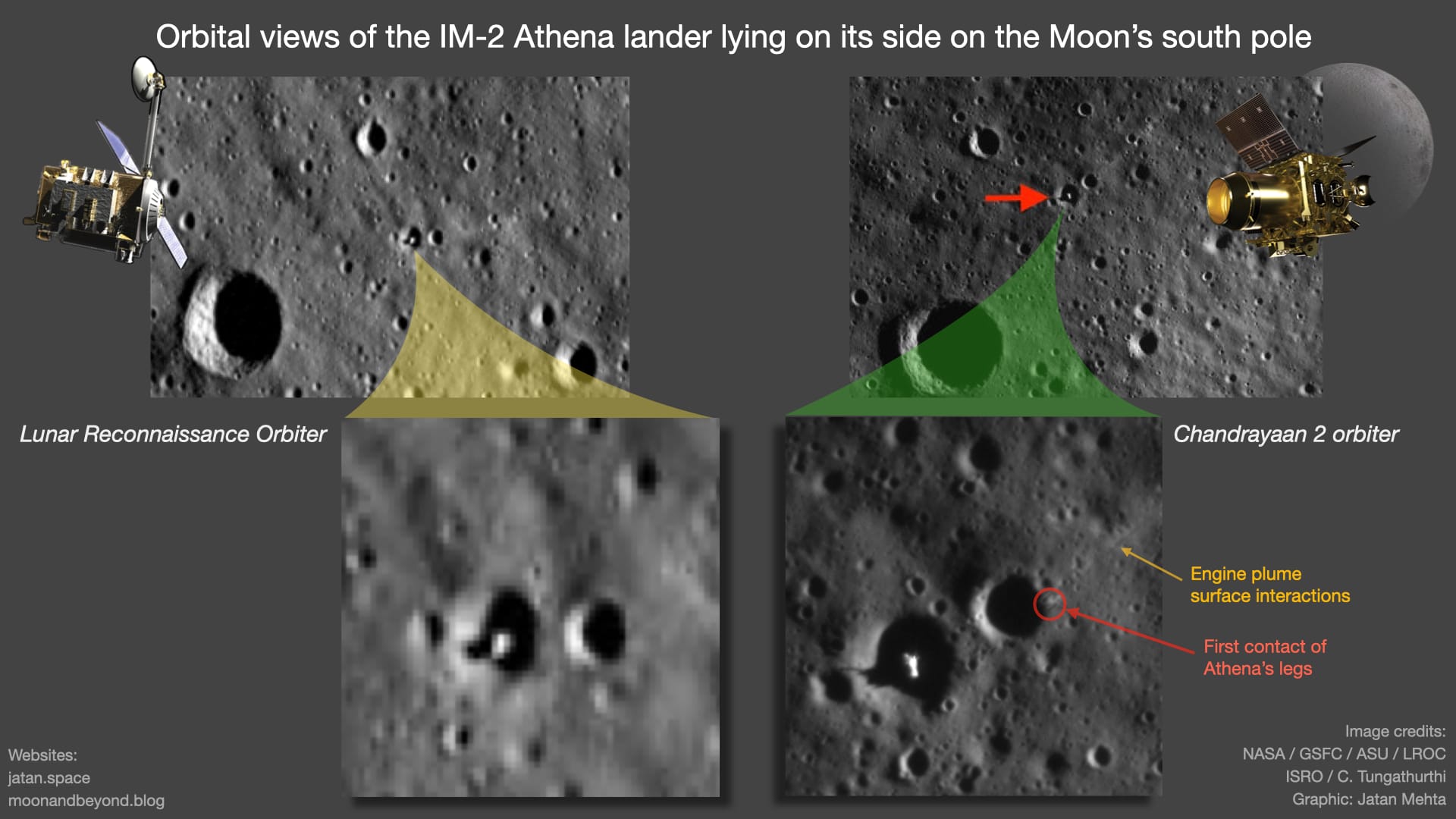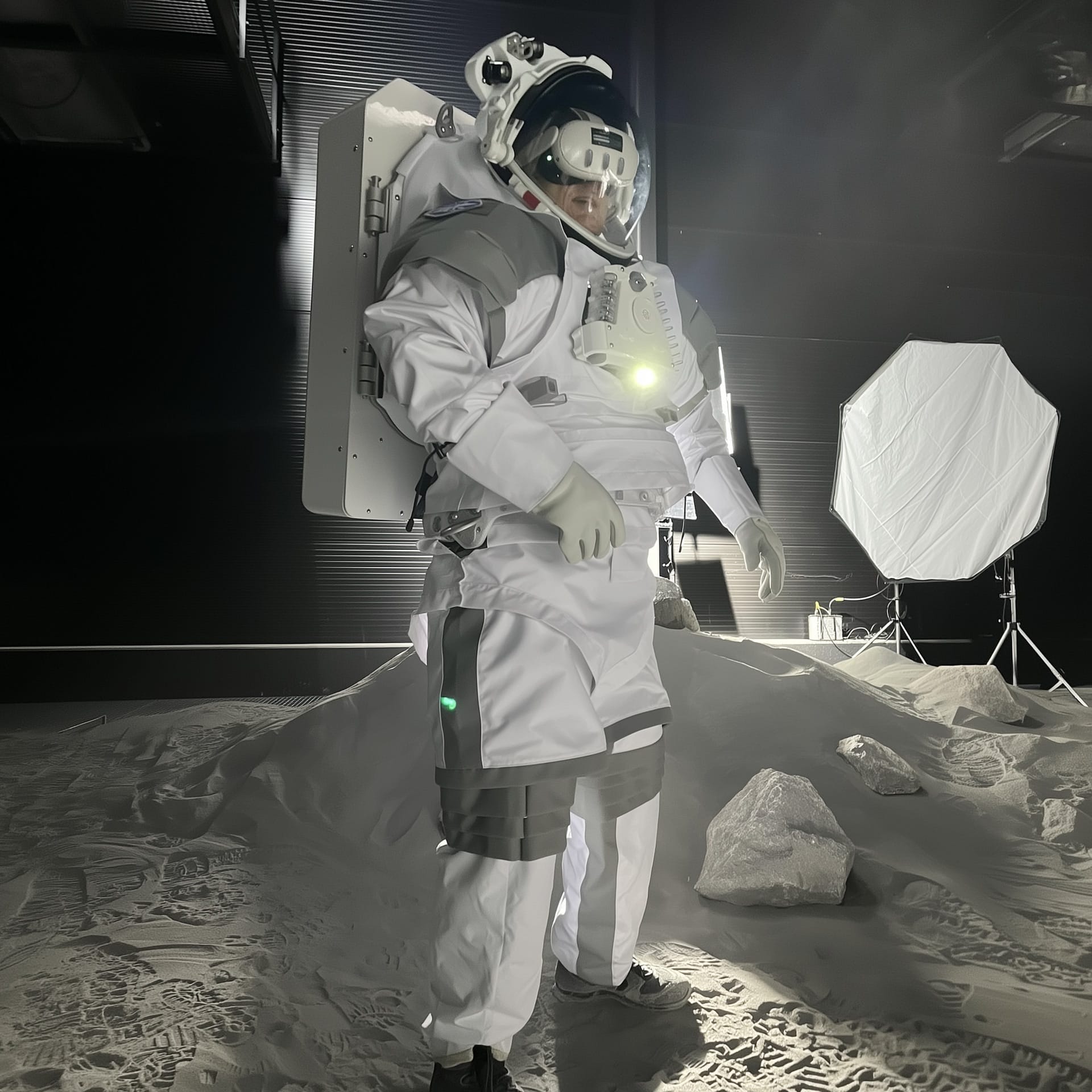Moon Monday #250: One small step, mission updates, and a much needed giant leap
Welcome to the 250th edition of my Moon Monday blog+newsletter! 🚀🌕
One small step: About two months ago, Moon Monday crossed 10,000 subscribers. I did not announce it until now because I wanted to celebrate it in some way. Having readers and supporters be truly spread around the world in various space communities is something I’m not just proud of but very grateful to be able to serve. Today, as Moon Monday also completes a unique 5-year archive of 250 editions covering & contextualizing humanity’s global lunar exploration missions, I’m elated to release & share my poetry pamphlet on space worldwide in multiple formats. Presenting Seven uni-verses, poetry on all that space evokes. 🌙
Mission updates

ISRO’s Chandrayaan 2 orbiter continues characterizing the lunar poles using its advanced dual frequency radar by mapping potential water ice deposits and gauging surface roughness, densities, and porosities. With the agency’s new announcement of processed Level 3C data products from the instrument now being available, ISRO noted the following:
The Dual Frequency Synthetic Aperture Radar (DFSAR) is the first instrument that has mapped the Moon using L-band in full-polarimetric mode and in highest resolution (25m/pixel). This advanced radar mode sends and receives signals in both vertical and horizontal directions, making it ideal for studying surface properties.
Studies of DFSAR’s enhanced datasets can add to the ISRO orbiter’s ongoing trickle of lunar water results while also furthering NASA’s collaboration with ISRO to have the orbiter aid Artemis landing site selections by prospecting for lunar polar water, classifying hazards, and gaining better topographic data about polar sites.

Eric Berger interviewed the NASA Artemis II astronauts that are preparing to fly around the Moon and back next year. The piece provides a good rundown of the mission’s timeline and key checkpoints & fallbacks post launch. The Mission Pilot Victor Glover shared an interesting detail to that end:
The first workout [for astronauts] is a checkout of that exercise hardware, but it's also a checkout of the environmental control system. Because I'm going to be breathing, I'm going to be sweating, making more humidity and more CO2 for the life support system to scrub out. And then if that's good, that's another check that means we can go to the Moon.
NASA wants to target February 2026 for Artemis II’s launch although quite a few pre-launch preparations remain for this year and next. The ongoing US government shutdown is also likely to impact the schedule at some point as contractors are not getting paid—even though efforts are on to resume nominal country operations.
US President Donald Trump has renominated Jared Isaacman for the NASA Administrator position, after abruptly withdrawing his first nomination earlier this year just as the US Congress was about to confirm the position. The re-nomination now has to go through the US Senate again. With the ongoing US government shutdown, there’s lack of clarity on if Isaacman will be required to pass another confirmation hearing like the last time. Marcia Smith captures the overall situation well:
The [US] House has not met since September 19. The Senate is still working with hearings taking place, nominations being approved, and votes on whether to reopen the government [sic] rejected 14 times. Eventually it will reopen—what it will take is being vigorously debated at the White House and on Capitol Hill—but the FY2026 appropriations bills still need to pass both chambers and be signed into law. None have so far.
Eric Berger notes in his report on the news that “if Isaacman is not confirmed before the end of this calendar year, he must resubmit conflict-of-interest paperwork, and the process could be drawn out into next spring.”
Many thanks to Gurbir Singh and Vishnu Viswanathan for sponsoring this week’s Moon Monday! If you too appreciate my efforts to bring you this curated community resource on global lunar exploration for free, without ads, kindly support my independent writing:
A giant leap in orbital imagery is what we need to realize advanced Moon missions
At over 1.6 petabytes, NASA’s Lunar Reconnaissance Orbiter (LRO) mission hosts by far the largest dataset from any planetary science spacecraft ever launched. LRO’s high-resolution lunar imagery and topographic data has been the bedrock for selecting landing sites of most Moon missions launched this century from around the world. But the 2009-launched LRO has gracefully aged now, with limited capabilities left for its latest mission extension compared to before. LRO’s inertial measurement unit has degraded, and it can no longer maintain an orbit that can study the lunar poles from directly above them; its orbit is now inclined. NASA has not approved any LRO successor like LExSO nor does the agency’s FY2026 Presidential budget request ask for any such funding.
India’s Chandrayaan 2 orbiter, touting a better radar and 2x the imaging resolution of LRO, has fulfilled a few advanced needs such as helping JAXA’s SLIM spacecraft achieve a precision Moon landing and aiding NASA with Artemis landing site selections. But leveraging of the orbiter’s capabilities has been limited in scope. Moreover, the orbiter is likely to end its nominal operations by the end of the decade, with no immediate replacement planned or announced by ISRO.

Commercial companies are entering the landscape to fill some gaps in orbital imagery and mapping, like the upcoming US-based services of Firefly’s Ocula and Blue Origin’s Oasis. While welcome, these are specialized and have relatively limited use cases. The expansive scope of future missions leading up to Moonbases requires having the whole spectrum of orbital datasets, especially for unravelling unknown ground truths about water ice on lunar poles—something the US has been failing at despite it being central to Artemis.
Recognizing existing constraints and anticipating future needs, a specialized team of US scientists released a report in 2022 formally recommending NASA to plan replacing the LRO with a cooperative multi-orbiter, commercial-international approach so as to support the increasingly complex and diverse upcoming robotic CLPS and crewed Artemis missions.
The Lunar Ledger project by the Open Lunar Foundation (a Moon Monday sponsor) aims to help catalyze acting on this advice by allowing more mission operators to reliably share technical data at mutual discretion. Six companies have signed up for the Ledger at launch: ispace, Firefly, Astrolab (a Moon Monday sponsor), JAOPS, Dymon, and SpaceData. Similar to how NASA, ESA, and ISRO have been planning coordinated imaging and scientific observations of Venus with their respective upcoming missions, lunar orbiters from around the world could do the same to accelerate progress and improve output while saving costs. Christine Tiballi, the Lunar Ledger’s Lead, is particularly excited about the possibilities. Orbital data from one entity could enable better rover missions for others, which in turn enhance the quality of orbital datasets themselves that later missions by others still can leverage. “Suddenly competition can become very lucrative cooperation,” says Tiballi.
This section was originally published by me on the newsletter of Open Lunar Foundation (a Moon Monday sponsor) as their Science Communications Lead. The article is republished here because of its relevance to my Moon Monday readers.
More Moon

- ESA has started conducting virtual reality training for astronauts at its versatile Moon-simulating LUNA facility in Germany, adding to prior tests of instruments, mission concepts, and modern astronaut tools. A simulated habitat module also adjoins LUNA to soon better test complex mission scenarios where humans and robots interact in varied ways for long periods.
- The South East Asian countries of Malaysia and Philippines have signed the US-led Artemis Accords for cooperative lunar exploration. The European country of Latvia also signed, making the total number of Accords signees 60. Payload Space has neat charts and graphs.
I’m very happy to publish this 250th edition of Moon Monday. Thank you so much to every single one of you who reads my labor of lunar love, to those who have provided feedback and shared editions, and to all supporters in every form. 💛
If you’d like to help sustain and flourish my one-of-a-kind globally read community resource and support independent writing in the process, kindly sponsor Moon Monday:

